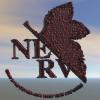Theory: Rendering in Bryce more (CPU) efficient than in Studio?
 ShelLuser
Posts: 749
ShelLuser
Posts: 749
Hi gang,
First of all let me stress out that this is not a comment in the likes of "one program being better than the other", just so to avoid any possible confusion.. Still, I do wonder about a particular aspect.
I can't help wonder if rendering in Bryce is more efficient with the hardware than Studio? I come to this somewhat premature conclusion because basically Studio does a whole lot more besides rendering alone. All the objects in a scene are basically dynamic objects; in such sense that you can more them around either wholly or partially. Which in itself will then trigger even more routines such as the optional clothing smoothing, check on how the bone structure plays out, etc, etc...
Whereas in Bryce the only thing which seems to matter where an object is concerned are the parts which make up that object and its texture. Everything else is fully aimed at positioning (moving / resizing), optionally applying materials ("shaders") and then of course rendering.
I came to this conclusion because while I was working on a rather complex (filled out) scene in Studio using the Tropical Elements scenery, the Helligator actor which stood menacingly over a startled Genesis figure I have experienced several moments where I ran out of memory (or something else went eery).
Eventually I optimized my (3Delight) rendering settings and could easily place several light sources to add some extra effects to the scene (like a small red point light to illuminate the Hellgator's eyes a bit) but it was still taxing on my PC.
So having become a little more familiar with Bryce I then selected the whole scene (all props and actors) and sent them right into Bryce. To my surprise it took Bryce a lot less to work this out. Although rendering took a little longer the very moment when I started adding extra light sources (keep in mind that I have done 0 optimizing so far), but I never ran into issues where Bryce couldn't cope no more.
As such I can't help wonder; Bryce being more optimal for rendering Studio scenes?
Or is there something obvious which I'm now fully overlooking here?


Comments
Difficult to give an answer. Fact is, Bryce being still a 32-bit application and everything is done in memory, you'll hit the wall sooner than with Studio 64-bit.
For rendering, Bryce has 3 priority settings: Low uses only 1 CPU, Normal half of what's available and High all CPUs up to 8.
Render time increases with high frequency (procedural) materials. Many lights cast many shadows and this makes the render slower, since more shadow rays have to be calculated. Transparency is also a potential render hog - particularly if used with IBL.
Then there are soft shadow settings - worse if soft shadows are used in the IBL lab. All premium render options like DOF, True Ambience, Blurry Transmissions and the like will slow down the render process. The good news is if you use Premium effects, adding more doesn't make a great impact anymore.
I think it is very difficult to compare render speeds among different applications. There are so many variables and the different applications use different approaches to calculate the "mess" at hand.
People often complain Bryce has a slow render engine because they use options without really understanding how much calculation is involved - and I think this is true for any other application. Because each one goes about the job differently, it is quite difficult to set up a scene that is useful to compare render times.